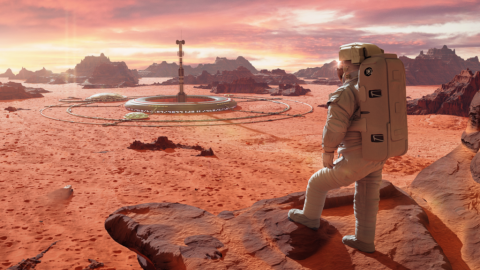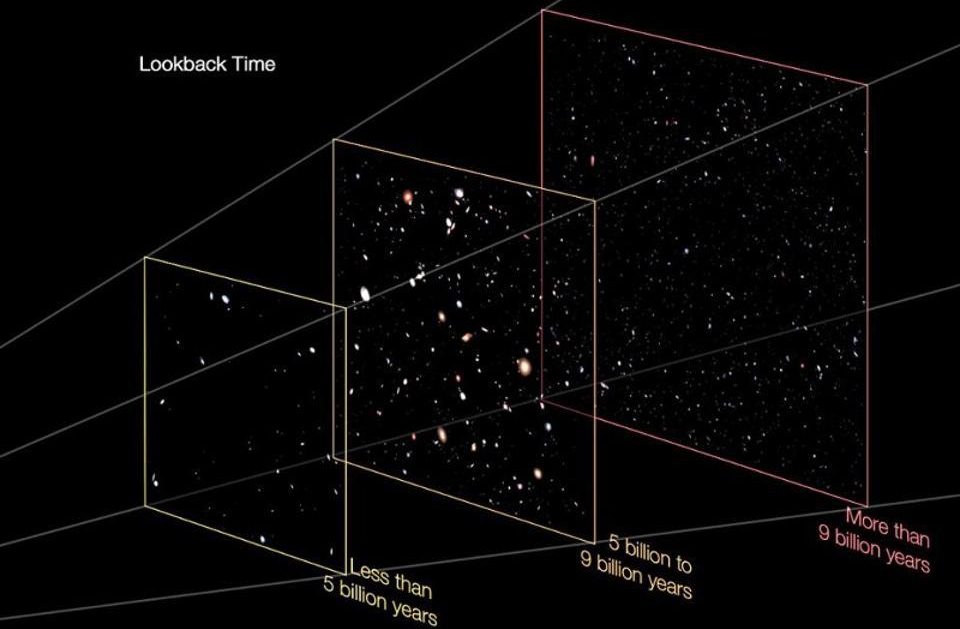Settle on Mars to save ourselves?

For our “Ask a Scientist” series, Fernando Perales of North Carolina asks, “Do you think humanity will colonize Mars before Earth’s self-destruction?”
Thank you for the question, Mr. Perales. This question lives at the overlap of two of the things I think about a lot. The first is climate change and how human beings will respond to its enormous challenges. The second is the human settlement of the solar system and the enormous possibilities it holds for our long-term future.
Let’s start with the Earth. There is no danger of humans destroying Earth or life on Earth. The biosphere, which is the sum total of all life on the planet, is remarkably resilient. It’s unlikely that even an all out-nuclear war would kill Earth’s capacity to support life.
Remember that the only reason we large-brained mammals are here today is because an asteroid took out the dinosaurs 65 million years ago, giving our ancestors at shot at greatness. So it all depends on the timescales you’re looking at. Over millions of years (or even less), the havoc we are stupidly imposing on our ecosystems will have been absorbed, digested, and turned into novel forms of life.
It’s doubtful however that we humans will be so lucky to survive the current havoc, one we are driving ourselves: Climate change. This world-altering change could definitely be an existential threat to the global civilization we’ve grown used to and depend upon. If that’s what you mean by “Earth’s self-destruction,” I hear you.
As for the crux of your question of whether we might settle Mars in time for it to become a kind of lifeboat for human civilization on Earth. The answer, I think, is absolutely not. I am all in for the settlement of Mars and the rest of our solar system, but the timescales involved are long enough that thinking of Mars as a “Planet B” is a mistake.
A giant spacesuit
There will be a lot of challenges to achieving permanent human habitation on the Red Planet. We can’t breathe its atmosphere (which is mostly CO2), and even worse there is not enough atmosphere to even allow a person to walk around without a spacesuit. Living on Mars would require humans to do so in a sealed, pressurized “habitat.” These habitats will essentially be giant spacesuits for an entire community, providing the right mix of oxygen, nitrogen, water vapor, etc., to allow people to live comfortably. And that would include a reliable heating system, since Mars is pretty cold. The habitats will have to maintain a fairly constant temperature day after day, night after night.
But the other big challenge for living on Mars is something we take entirely for granted here on Earth: radiation.
The Earth has a powerful magnetic field that’s generated via the swirling motions of molten iron in the planet’s core. That field shields Earth from high-energy particles streaming from the sun. But Mars has no such magnetic field. It’s quite a bit smaller than Earth which means the heat in its core (which keeps the core molten) leaked away billions of years ago. The Martian core froze solid, and the magnetic field died. Without the magnetic field’s protection, Earthlings on Mars would be exposed to such high doses of radiation that cancers would be an almost certainty.
The radiation threat means that any habitats, at least at first, may have to be built underground. There appear to be huge underground tunnels created by giant lava flows on the Red Planet, and these might be great places to start a settlement. (See National Geographic‘s great series Mars for an exploration of this idea. Full disclosure: I was a “talking head” on Season 2). There have been some other innovative ideas for dealing with the radiation problem, but these would likely take a longer to deploy. (For what it’s worth, the 2015 film The Martian was lauded by scientists as being pretty realistic.)
So where does this leave us? I am convinced that we will begin the process of building human habitats on Mars very soon. We’re just on the edge of having the technologies to do this today, but given the basic challenges I outlined above, we will start small. It’s going to take a whole lot of ingenuity and gumption (and funding) to build something that could maintain just 100 people Mars. Even then, it would not probably not be entirely self-supporting.
If you wanted something that could support a million human beings, then you are looking at timescales that, I imagine, stretch out for more than a century. As for supporting billions of people? Well, that’s the domain of pure science fiction and would require “terraforming” Mars—i.e., engineering it to support a dense, oxygen-rich atmosphere. That’s a project that would require thousands of years (if it’s even possible).
The difficult effects of climate change here on Earth, however, will play out on timescales of only decades—maybe a century or so. It’s much closer in time than terraforming Mars. So we’ve got to get our act together on Earth really, really soon.
But the good news is that the solar system will be waiting there for us. It’s the prize we win for successfully dealing with climate change. And all that we will have learned about ecosystems and human habitation will be exactly the kind of thing we’ll need for making new homes out there. Let’s get to work!
Part of an ongoing series where scientists answer questions from ORBITER readers. Do you have a question for “Ask a Scientist”? Click here to submit yours.
The post Settle on Mars to Save Ourselves? appeared first on ORBITER.





